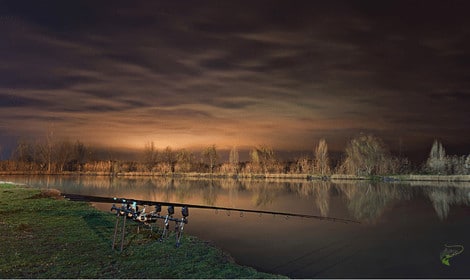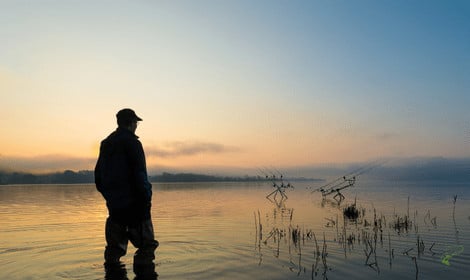
Carp will vary where they are on a venue depending on weather, the season and where the natural food is and many other factors.
The light levels can also affect where the carp will be and if they may be feeding or not.
Most of you know that night sessions can be some of the most productive times for catching carp and should not be discounted.
In this post, I will discuss where carp go at night and if there is a solid answer that can help you choose a swim for your next night’s fishing session.
Where do carp go at night?
As night falls and light levels drop significantly, the carp will often move to different areas of the venue to feed. They typically spend a lot of time during the day trying to avoid angling pressure and holed up against features and snags.
When night comes, the fish feel far safer swimming in darkness, using their highly sensitive olfactory system to find edible food in the water.
They feel the cover of darkness means predators and anglers can’t target them and will feed happily in many areas of the venue.
As darkness falls and the temperatures decrease, there is far more insect and crustacean activity underwater that carp will feed on naturally.
So, where exactly do carp go at night?
Unfortunately, the answer is never that simple.
However, you can use general ideas to aid your thought process of working out where the fish will be as night falls.
When the carp are cruising for food in the safety in darkness, it’s extremely common to find them feeding over popular day swims that anglers fish and bait regularly.
During the day, the fish may have become wary of this spot and tend not to feed on the free offerings from carp anglers trying to get a hook in their mouth.
As darkness falls and all the free bait still lies at the bottom with most anglers in their beds, the carp may move to these areas to feed in safety.
Getting a rig into some of these popular, overfished and over-baited areas can be beneficial to see if the fish are grouped up and feeding over patches of baits.
Carp will generally feed at any depth or any parts of the venue when darkness falls, and there is no one set answer as to where the fish will be.
It can prove worthwhile to arrive at dusk and closely watch the water as the sun starts to go down.
Quite often, this can stimulate a flurry of carp activity as they start to feed more heavily as the dropping light levels indicate darkness is coming.
During this period, you might be able to spot areas of carp feeding by looking for telltale signs.
Look for things like:
- Feeding bubbles in areas of the lake. These occur when carp sift through silt and other debris on the bottom, looking for food.
- Clouded patches of water surrounded by clear water. Carp will cloud up the water with silt when rummaging around on the bottom looking for food.
- Carp, jumping, crashing or head and shouldering can indicate where carp are feeding. When feeding, they commonly jump from the water to rid their gills of debris and dirt.
The shallow margins are also great for checking for carp during the night. Often, the fish will stay away from these areas due to the number of anglers on the banks.
During the night, the carp will come in close, looking for any leftover bait thrown in by anglers or any natural food sources present in shallow waters and weed edges.
Fishing in the same swims and work areas during the day can produce fish at night. But in many cases, after dark, carp can move and travel through areas they might not frequent midday.
So be sure to try out your day spots, but better yet, scout out new areas and listen and watch after dark for any sign of fish activity. You might discover new swims or areas that consistently hold fish after dark and should focus your efforts there.
In rivers and canals, most of the time, you can simply fish in the same areas; narrow waterways essentially work like a fishing highway.
At the same time, they might hold frequent areas for water depth or other reasons; at night, you might just find these fish cruising up and down the waterway under the darkness’s security.
That’s All.
As I’m sure you can imagine, there is not one set answer to where the carp will go during the night.
That being said though by using the base idea I’ve discussed in this post you should have a decent idea of where you should at least start to look for the fish on your next night carp .fishing trip
If you have any questions, don’t hesitate to leave a comment below, and I’ll get back to you ASAP.

